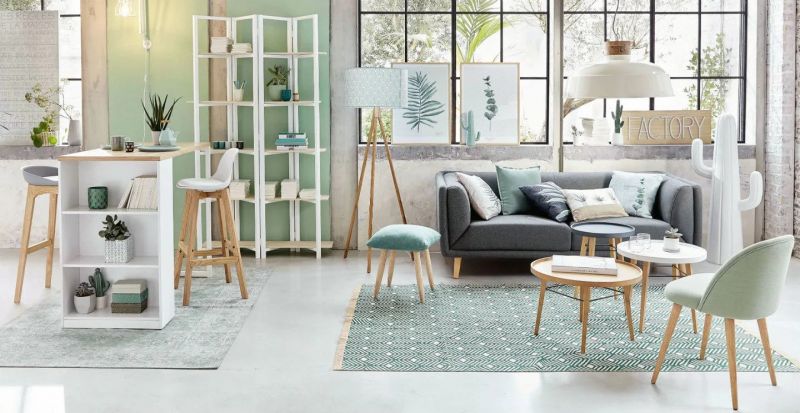
Coming up with a design that suits an open-plan space can be challenging. When there are no walls to define the space, interior designers rely on one secret trick. They use rugs to anchor the area and visually divide the room into zones. An area rug has the power to connect the elements while adding a touch of warmth to the home.
Define an informal seating area
An open-plan layout can have that cold warehouse-like look. A rug helps divide a large room into cozy areas that feel more intimate. Use it to define an informal seating area in the living room without using room dividers. However, remember to find the right rug size to achieve the desired effect. A small one will look odd and disproportionate, while a big one looks like a carpet. Interior designers have a secret trick when determining the right rug size. The rug should be enough to cover at least the front legs of your sofa and armchairs. Anything less than that would disrupt the room's proportions.

Anchor dining area
A bold rug defines the dining area and makes it feel snugger. Interior designers would advise you to mind the shape of the table when choosing your rug. The rug should follow the form of the table for a harmonious look. To determine the proper size, measure your dining table and add two feet on each side to comfortably fit the chairs.

Create a foyer
A curated foyer leaves an excellent first impression and welcomes your guests with style. A rug can help shape the area and make a large entryway more inviting. A stylish console table and a round mirror create a designated foyer area, while the rug makes this setting look intentional.

Curate cozy reading nook
A cozy reading nook is a favorite spot for book lovers. Curating one in your home isn't that difficult. Use the awkward corner to create a peaceful place for relaxation and enjoying a good book. Start with a bold rug to define the area and give it a purpose. Add a cozy chair and a small side table to drop off your books. Finish off with a floor lamp, and your self-care corner is ready.

Layer your rugs
Playing with different textures is the key to adding a professional touch to the space. Layering rugs is the perfect way to add visual weight to your living room. A neutral rug brings a soft look, complementing a faux cowhide rug.

Direct traffic flow
An open-plan concept can have multiple entrances to different rooms. A statement runner helps you direct the traffic flow and design an optimal room layout. A rug with a geometric print creates a traffic pattern in a large passage.

Final thoughts
Area rugs bring lived-in comfort to the space and make it cozier. However, interior designers also use them to define different zones in an open-plan concept. Now that you know the professional tricks, you can visually divide the space into zones. If you're looking for the perfect rug, RugMatcher has you covered.
Within a few clicks, you can get rug recommendations based on your interests and characteristics, with our "Is It Good For Me?" test. We invite you to try it now and get highly personalized rug recommendations to save time!


